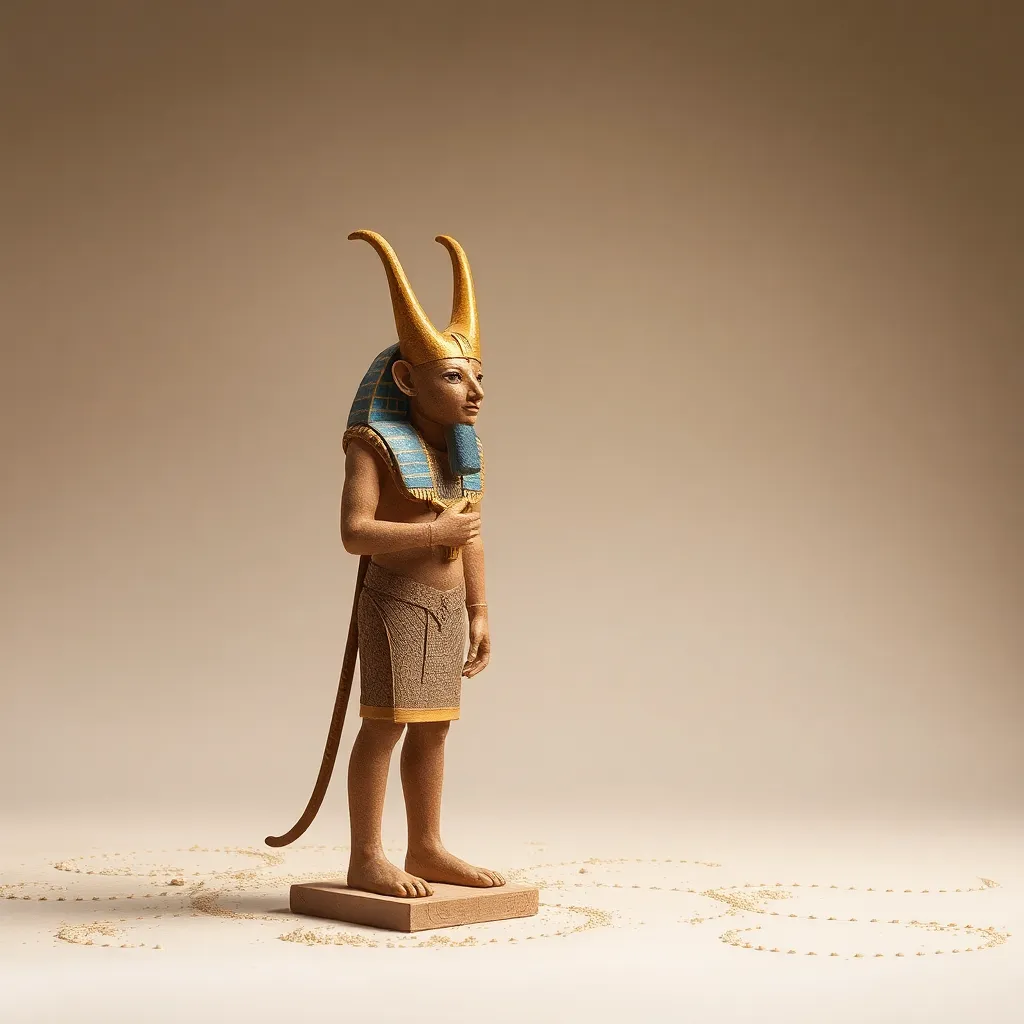The Role of the God Khnum: Shaping Life from Clay
I. Introduction
Khnum, a prominent deity in ancient Egyptian mythology, is revered as the god of creation and the potter who shapes life from clay. His significance stretches beyond mere creation; he embodies the intricate connection between the divine and human existence. In ancient Egypt, creation myths were vital, providing the people with a framework to understand their world and their place within it. This article explores Khnum’s essential role as a creator god and potter, symbolizing the profound relationship between divinity and humanity.
II. Historical Context of Khnum Worship
Khnum’s origins can be traced back to the earliest periods of ancient Egyptian religion. He was primarily worshipped in the region of Elephantine, located at the first cataract of the Nile. This geographic significance is crucial, as the Nile River was considered a lifeline for agriculture and sustenance in ancient Egypt.
- Origins: Khnum is believed to have emerged during the Old Kingdom, with references to him appearing in the Pyramid Texts.
- Geographic Significance: The city of Elephantine was pivotal for trade and agriculture, leading to Khnum’s association with fertility and life.
- Evolution of Worship: Over different dynasties, the nature of Khnum’s worship evolved, reflecting the changing political and social landscapes of Egypt.
III. Khnum as the God of Creation
As a creator god, Khnum’s most compelling myth revolves around his role in shaping human beings from clay on his potter’s wheel. This act of creation not only emphasizes his artistic abilities but also highlights the Egyptians’ reverence for craftsmanship and the natural world.
- Creation Myths: Various myths describe how Khnum molded the first humans and the importance of his breath in giving life.
- Symbolism of Clay: Clay represents fertility, creativity, and the earth, which were foundational elements in Egyptian culture.
- Cycles of Life: Khnum’s association with the cycles of life and death underscores his significance in both the living world and the afterlife.
IV. Iconography and Representation of Khnum
Khnum’s iconography is rich and varied, often depicting him in ways that emphasize his divine nature and creative power. Common representations include:
- Art and Sculpture: Khnum is frequently shown as a man with the head of a ram, symbolizing strength and fertility.
- Ram-Headed Appearance: The ram was a sacred animal associated with fertility and was believed to embody Khnum’s creative essence.
- Artifacts and Inscriptions: Numerous artifacts, including pottery and inscriptions, highlight his role as a creator and protector of humanity.
V. Khnum’s Role in Daily Life and Rituals
Khnum’s influence permeated various aspects of daily life in ancient Egypt, particularly in agriculture and religious practices.
- Agricultural Practices: As a god associated with the Nile, Khnum played a crucial role in irrigation and agricultural fertility.
- Rituals and Offerings: Devotees would offer clay figurines and other gifts to Khnum to ensure fertility and prosperity.
- Funerary Practices: In funerary contexts, Khnum was invoked to shape the deceased for the afterlife, reinforcing his role as a protector.
VI. Khnum’s Relationships with Other Deities
In the intricate tapestry of Egyptian mythology, Khnum had significant interactions with other gods, enhancing his role in the divine pantheon.
- Interactions with Hapi and Hathor: Khnum was often seen as a counterpart to Hapi, the god of the Nile, and Hathor, the goddess of love and joy.
- Collaborative Role: Khnum worked alongside other deities to maintain balance and harmony in the cosmos.
- Mythical Partnerships: Myths illustrate Khnum’s partnerships, such as creating the first king alongside other gods, highlighting his importance in maintaining divine order.
VII. Khnum’s Legacy and Influence
Khnum’s legacy extends beyond ancient Egyptian religion into modern interpretations and cultural references.
- Modern Interpretations: Contemporary culture often draws upon Khnum’s imagery and themes, reflecting the ongoing fascination with Egyptian mythology.
- Influence on Religious Thought: Khnum’s creation narrative has influenced various religious beliefs and practices beyond ancient Egypt.
- Preservation in Media: Khnum’s image persists in films, literature, and art, showcasing his enduring appeal and relevance.
VIII. Conclusion
Khnum’s significance in ancient Egyptian belief systems cannot be overstated. As the god of creation and the potter, he symbolizes the profound connection between divine craftsmanship and human life. His legacy continues to resonate today, reflecting humanity’s enduring quest to understand origins, identity, and the intricate relationship between the natural world and the divine. Through the study of Khnum and his myths, we gain valuable insights into the human experience and the timeless narratives that shape our understanding of existence.




